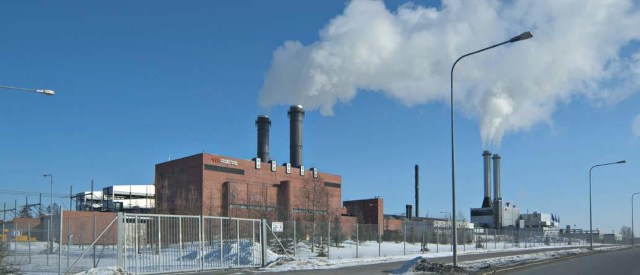The idea of a European capacity market has been occupying people’s minds for quite some time. Jan Ondřich takes a look at the feasibility and design and finds that Europe must solve other – more pressing – energy market issues first.

Does Europe need capacity markets, for example in order to keep gas power plants competitive?
The debate on European energy markets is dominated by so-called ‘capacity markets’, a scheme to reward power generators for their potential to produce (installed capacity) electricity, in addition to the electricity they actually produce and sell.
One side claims that Europe (or individual member states) must introduce a capacity market to ensure sufficient conventional power generation to deliver security of supply. This argument asserts that wholesale power prices are too low to cover the cost of conventional generation and, as a result, conventional power plants are either mothballed or decommissioned. Eventually, so the argument goes, there will not be enough conventional generation to back up Europe’s intermittent renewable energy, leading to blackouts.
The other side claims that low prices are a sign of abundant generation capacity. To provide conventional power generators with extra support to keep uneconomical plants running or to invest in new ones makes no sense. If there were a shortage of supply, the argument goes, power prices would increase and so-called ‘scarcity prices’ (in hours when there is not enough renewable generation) would motivate investors to build new plants or maintain existing ones.
So does Europe need a capacity market to keep the lights on?
Possibly yes, if it is well designed and implemented in the right way and at the right time, but certainly not at all costs, and not even as a priority. There are more pressing issues which need to be remedied before a European capacity market is introduced. A precipitate and ill-conceived introduction of a capacity market could petrify current market inefficiencies, hampering innovation and providing economic rent to Europe’s ailing utilities.
Here are four reforms that are required before a capacity market is introduced:
- Carbon market. A working carbon market scheme is essential for motivating investment in clean technologies on both the supply and demand sides of the power market. A high price of carbon would lead to a shift away from coal to gas. Inflexible coal plants would become uneconomical and close down, to be replaced by cleaner, flexible gas-fired power plants.
- Full day-ahead and intraday market coupling. Europe must continue in its efforts to couple wholesale power markets. Larger and more liquid markets lead to a more efficient allocation of resources, increased transparency and a limit on the market power of incumbents.
- Better and smarter grids.Europe needs to invest in the eradication of grid bottlenecks. Investment decisions would be ideally based on market signals generated by nodal pricing of the transmission grid. Europe not only needs more grids to link countries, but a smarter grid, one that is better at handling decentralised intermittent sources and demand management.
- Unification of rules and requirements for tendering and dispatch on ancillary and balancing markets. Ideally Europe would become one bidding area (although dispatch may still be managed by individual TSOs). Balancing markets should be coupled just like the intraday market. As with wholesale power markets, greater transparency would lower barriers to entry. Competition would lead to lower prices and would facilitate participation of innovative technologies, such as demand response management.
Only after all of the above have been remedied should a European capacity market be set up. If introduced, it must reward flexibility, load-following ability (how closely generators are able to follow load) and low emissions. It must be transparent, with low barriers to entry. The capacity market must allow participation not only of power generation and demand but also transmission grids if it is to ensure unbiased allocation of resources within the power sector. Limiting the capacity market to power generation would have the unwanted effect of creating incentives to build even more power plants, the last thing Europe needs right now.
Jan Ondřich is a partner in market analysis and advisory firm Candole Partners. He is a regular contributor to this blog.
If you had told me that a 60 inch TV would soon cost $1000 four years ago I would have had a hard time believing that. Nowadays I’m prone to believe a 60 inch TV may cost $500 in the not too distant future.
PV costs in Europe came down another 15% in 2014. This is the 6th straight year in which annual costs came down by 15 to 25%. If the pattern continues PV will become the undisputed go to source for daytime generation before the end of the decade. A carbon market is not required if clean generation technologies are cheaper.